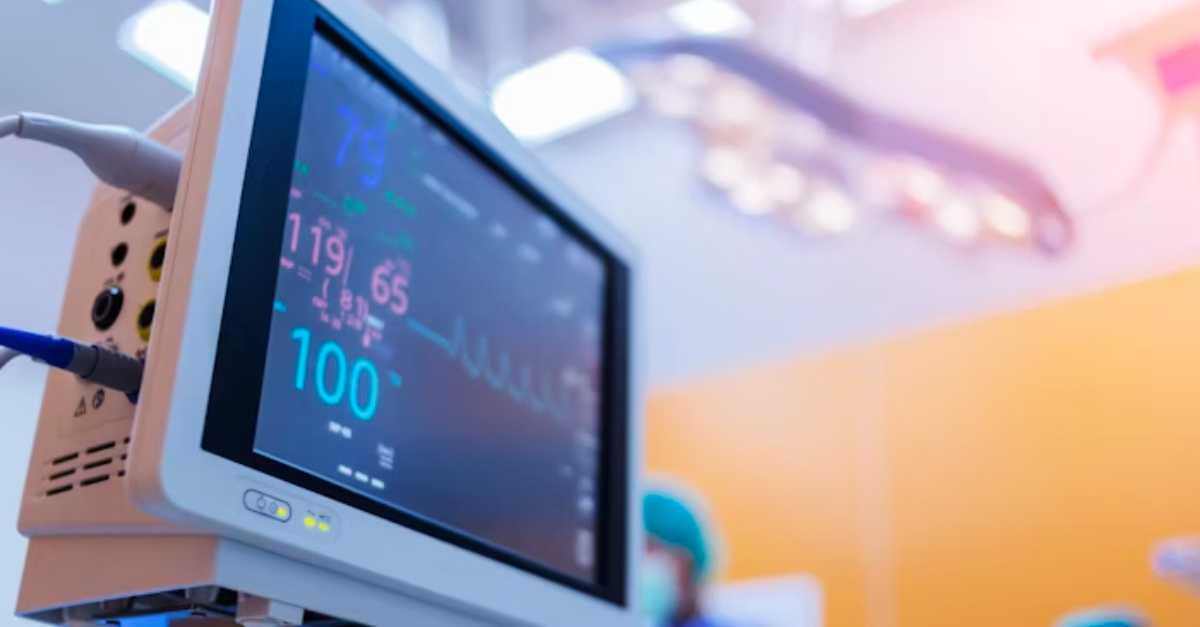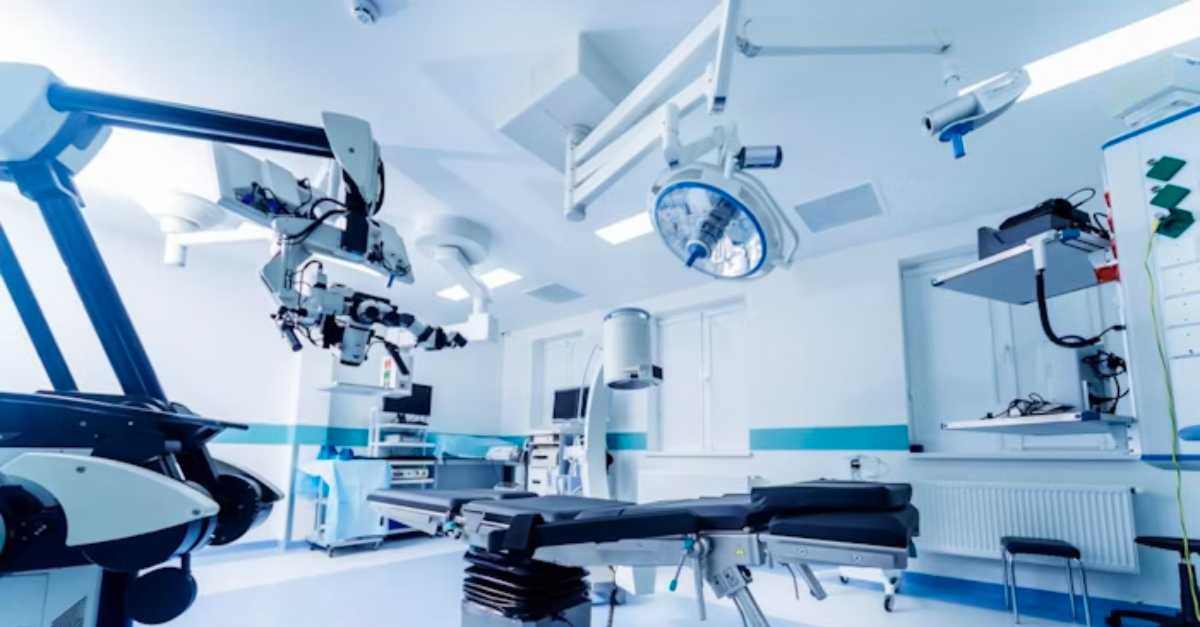
Mitigating Medical Equipment Cybersecurity Risks with a Modern Healthcare CMMS
Learn the true cost of healthcare cybersecurity, the risks hospitals face, and how to implement an effective cybersecurity strategy.
Solutions
Workplace Management Solutions
Real Estate Management Solutions
Maintenance Management Solutions
Energy Management Solutions
Engineering Document Management Solutions
Asset Management Solutions
Automate campus scheduling for classes, meetings, and exams with our EMS software.
Plan and manage conferences effortlessly with EMS software to impress guests and streamline operations.
Boost workplace flexibility and maximize space use with seamless desk and room booking.
Organize workplace or campus events smoothly, creating memorable experiences.
Optimize workspace, manage allocations efficiently, and reduce costs with our space management solutions.
Deliver projects on time and within budget by improving communication, collaboration, and efficiency with our software.
Streamline lease accounting for ASC 842, IFRS, and GASB compliance.
Manage leases efficiently by tracking key dates, analyzing costs, and ensuring compliance.
Centralize data and analytics for better insights, faster negotiations, and revenue growth.
Centralize facility and asset maintenance, automate work orders, and ensure compliance with our CMMS software.
Extend asset life, reduce downtime, and prevent costly repairs with data-driven monitoring.
Prevent equipment failures and extend asset life by detecting and addressing issues early.
Make sustainable, cost-efficient energy decisions by monitoring and optimizing power consumption.
Remotely monitor and control equipment with real-time data to predict issues, boost efficiency, and reduce downtime.
Easily share and collaborate on documents, creating a single source of truth for engineers and contractors.
Manage and analyze assets across their lifecycle to schedule maintenance, reduce downtime, and extend lifespan.
Improve visibility, automate work orders, and ensure compliance for efficient facility and asset management.
Resources
Browse our full library of resources all in one place, including webinars, whitepapers, podcast episodes, and more.
Support
Looking for access to technical support, best practices, helpful videos, or training tools? You’ve come to the right place.
About Accruent
Get the latest information on Accruent, our solutions, events, and the company at large.

Discover how to build up your cyber security and explore best practices and procedures.
Table of contents
Strong cybersecurity is critically important when it comes to your medical devices: these devices not only house sensitive patient data but also connect to your broader systems, which means that a breach on any device could compromise your whole organization.
What’s worse, hackers know this, and they’re exploiting medical device vulnerabilities every chance they get. According to a survey in Black Book Market Research’s “2020 State of healthcare Cybersecurity Industry” report, it is estimated that more than 1,500 healthcare providers are vulnerable to data breaches of 500 or more records in 2021, representing a 300% increase over 2020. That means that breaches are expected to triple – and 75% of healthcare providers don’t feel prepared for what’s to come.
Here’s how to build up your medical device cybersecurity so you don’t become one of these statistics.
Today’s medical devices and software applications are more advanced and technologically interconnected than ever before. As BSI explains, “What once existed as non-networked and isolated equipment now exists as fully networked equipment with bi-directional communications, remote access, wireless connectivity and software.” What’s more, the introduction of the Internet of Things (IoT) in the healthcare space allows for more integration between Hospital Enterprise Systems/Information Technology (IT), Clinical Engineering (CE) and suppliers through remote connectivity.
In many senses, this creates new opportunity for things like remote monitoring and diagnostics, making patient care faster, safer and more convenient. Patients with implanted heart devices, for example, can be monitored remotely so they don’t have to visit their cardiologist on a regular basis. Similarly, patients with diabetes can manage their blood sugar autonomously using glucose meters and insulin pumps.
However, this interconnectivity also presents new and ever-increasing cybersecurity risks. After all, these medical devices (and the sensitive data they house) are connected to one another, to the Internet and to broader hospital networks via wired or wireless connection — and this interconnectivity makes them vulnerable to cyber threats.
This concern is even more pressing when you also consider the presence of legacy technology, security vulnerabilities and inadequate device management, all of which make medical devices even more vulnerable to developing huge security gaps.
The good news? Many of these cybersecurity threats and vulnerabilities can be reduced if regulators, manufacturers and healthcare organizations understand how to effectively manage and reduce cybersecurity risks. Here are some best practices to follow.

Cybersecurity protection does not simply fall on the shoulders of healthcare delivery organizations (HDOs). Instead, it’s a multi-pronged effort that requires cooperation from medical device manufacturers (MDMs) and healthcare organizations.
Manufacturers, on one hand, must identify risks during production and take the necessary steps to mitigate those risks. Similarly, healthcare organizations must consistently evaluate their network security and make sure that no vulnerabilities go unnoticed.
Only when both entities do their part can cybersecurity threats be effectively avoided.
When it comes to maintaining cybersecurity, your medical device manufacturers must proactively identify and reduce risks when they are building these devices. They should, at minimum:
There should also be a degree of on-site liability for devices that do not follow current cybersecurity best practices.
If you know what attackers are after, you know what you’re trying to stop and what those proactive measures might entail. Attackers primarily target medical devices to access the broader hospital network and the sensitive data therein – and they're extra motivated because hospitals have shown that they’re willing to pay to get their information and systems freed.
Keep in mind, though, that these attacks don’t always happen in the most obvious way. There are many go-to vulnerabilities that attackers actively target because they’re things that developers or hospitals may overlook. These will be their first attempted points of entry. They include:

There are many kinds of active threats that your employees and systems may face. These include:
Cybersecurity threats can come from a variety of different sources. It's important to understand the possibilities, motives, technological capabilities and resources of each source:
In many instances, these attackers are after one thing: money. And there’s a lot of money to be had by attacking the healthcare system. That’s why hospitals have been targeted for cyberattacks ever since the advent of electronic health records. And this has only become more prevalent during the pandemic. Reuters reports that ransomware attacks overall were 50% higher over the last few months of 2020, with nearly twice the number of health care organizations impacted in the third quarter of 2020 than the previous quarter. And attackers have gotten millions of dollars from these attacks, all to say that you should remain prepared for this type of threat in the future.
Accruent’s healthcare computerized maintenance management system (CMMS) can help your organization identify and resolve any medical device and security risks. To mitigate cybersecurity risks, the right CMMS system will:
These features can ultimately help you identify security gaps, automate mitigation steps and track those fixes as they happen.
That’s just the tip of the iceberg when it comes to how a CMMS can streamline your operations and maximize your security.
Schedule a demo to see, in real-time, how a healthcare CMMS can benefit your organization.
Learn the true cost of healthcare cybersecurity, the risks hospitals face, and how to implement an effective cybersecurity strategy.
Learn more about the latest cybersecurity challenges that food and beverage organizations face post-COVID and what you can do to protect your ...
A modern, purpose-built CMMS solution can help your healthcare organization improve asset and equipment availability, simplify compliance, enhance ...
Subscribe to stay up to date with our latest news, resources and best practices